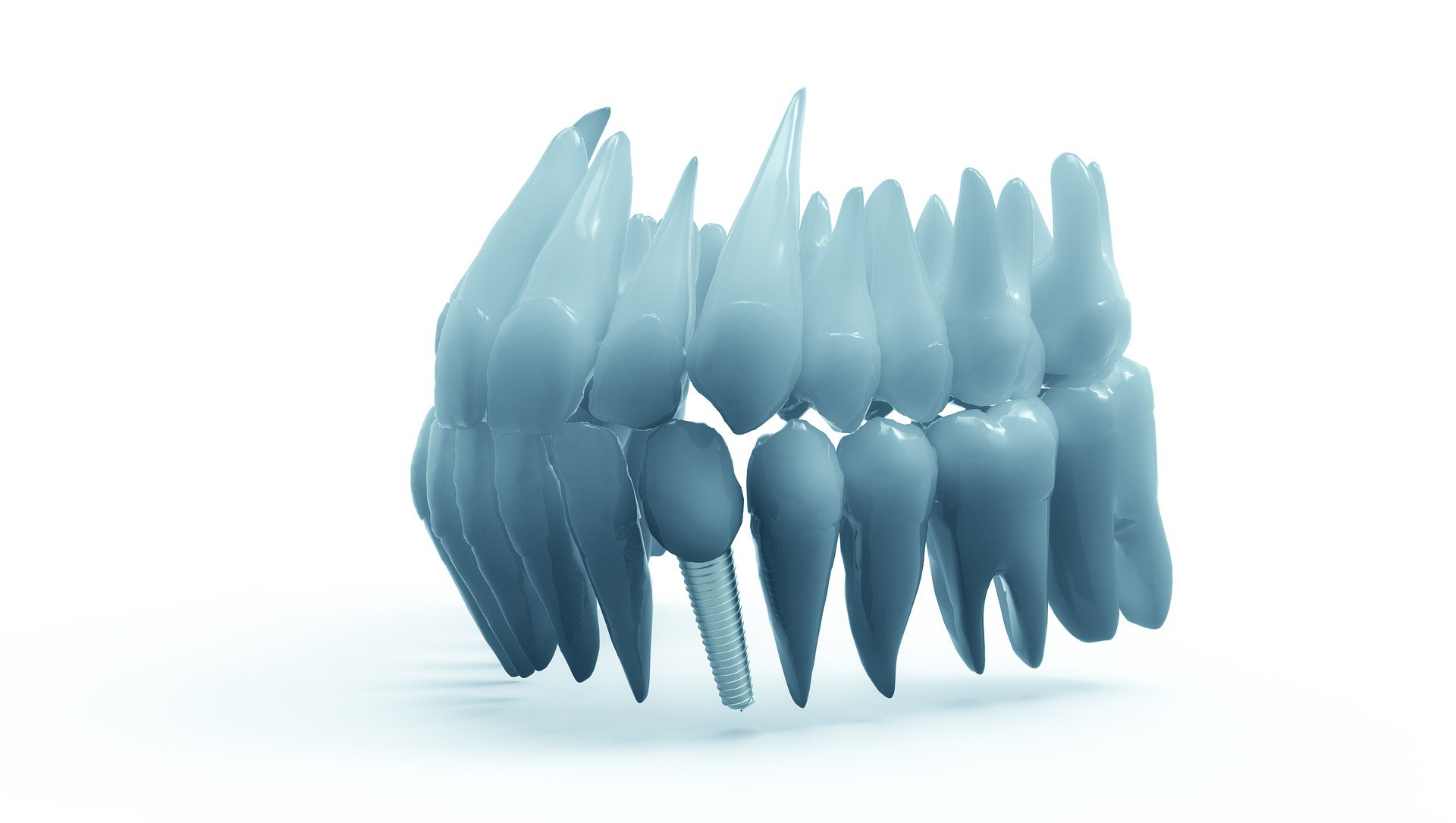Dental implants help replace teeth lost through an accident, gingivitis or tooth decay. The artificial teeth roots made using special microtechnology sit as firmly in the jaw as natural teeth.
What do dental implants consist of?
Most dental implants consist of three parts:
- the cylindrical and rounded implant body with internal and external threads
- the implant abutment
- the superstructure (implant crown)
The implantologist rotates the implant body, which is usually made of pure titanium or a titanium alloy, in the tooth gap. He then screws the abutment to the implant body. In the final step, he attaches the implant crown on the abutment. If the patient opens his mouth, only the very natural-looking crown can be seen. The external thread of the implant ensures that the artificial tooth root is firmly connected to the jaw as soon as it is screwed in. In the following months, it grows together with the surrounding bone tissue (osseointegration).
Which implant types are the most common?
Most implant bodies have a length of 0.8 to 1.4 cm. The implantologist uses them where there is still enough bone substance. If the bone mass is too low, micro-threaded implants are an option. Their implant body is only six to eight millimeters long, if necessary, but even shorter. They are also indicated where sensitive areas (lower trigeminal nerve) could be injured.
There are also orthodontic implants (orthodontic implants). They correct crooked teeth. Basal implants (BOI implants) have a rounded base plate and a central pin that runs out into an abutment. On this the dentist then attaches the ceramic crown. These threadless implants are ideal where there is no need to build up the jawbone (or can). Artificial tooth roots made of titanium with a screw thread are becoming increasingly popular over conventional implants. The material is well tolerated, corrosion resistant and has high mechanical strength.
What are implants with micro-threads?
These artificial tooth roots have a screw-like shaped body, which cuts into the surrounding bone tissue when screwing it into the jaw (self-tapping implants). This process ensures a primary strength of the implant even where there is little bone of its own. The meta-study published at http://joionline.org/doi/full/ … concludes that micro-threaded implants grow better into the bone than the commonly used artificial tooth roots.
What impact does the implant design have on oral health?
Externally threaded implants bond better with the surrounding bone tissue: on its surface, protein molecules are deposited, which support the formation of new bone cells (osteoblasts). This shortens the healing process. However, if they are very conical in shape and have a diameter of at most 4 mm, the implant and thus also the jawbone are subject to heavy stress during chewing. Strong threads and very rough surfaces worsen existing peri-implantitis (tissue inflammation near the implant).
Conclusion
Patients who choose a dental implant often use a self-tapping titanium implant with a thread and a roughened surface. Currently, there is no thread design that is applicable to most medical indications.
Weitere Beiträge

Robots instead of dentists - already common in China?
Almost everyone knows the uncomfortable feeling when dental treatment is imminent. Dental treatment anxiety or phobia plagues about one third of the German population. And how would you feel if a robot takes over the next procedure instead of a dentist?


